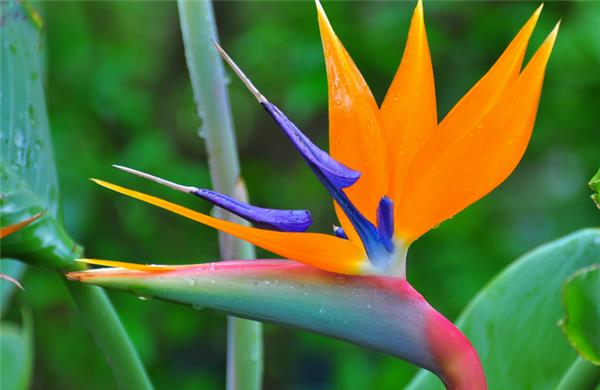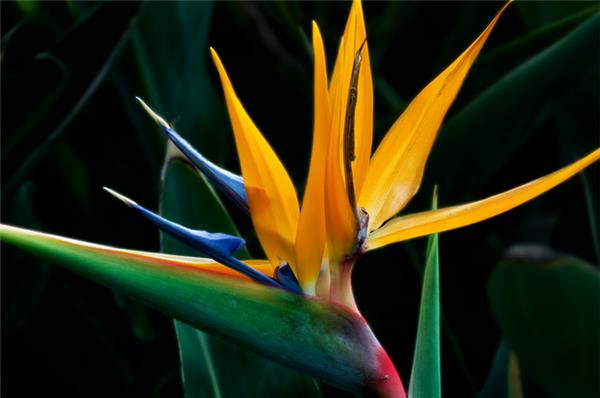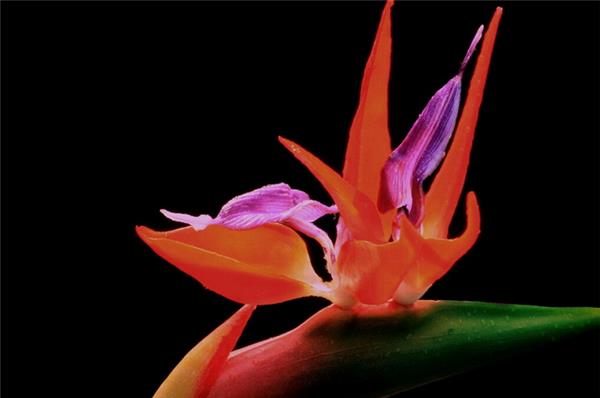How do birds of paradise grow?
The orchid is a kind of bird of paradise, also known as bird of paradise and bird of paradise, native to South Africa. Its scientific name is in memory of Queen Charlotte, Princess George III of England. Shaped like a crane with its head held high, its leaves are oblong-lanceolate, and its flowers are peculiar in shape and bright in color, so it is known as the orchid. Next, let's take a look at the breeding methods and matters needing attention of the orchid.

1. Conservation of bird flowers in paradise
Key points of cultivation: organic orchid prefers a sunny, warm and humid climate. The suitable temperature for growth is 18-24 ℃, and it is not cold-resistant. Although it is resistant to drought, it should not be too dry. Continuous high temperature will lead to physiological obstacles and flower bud death. The sandy soil with deep soil layer, good drainage and rich organic matter is the best, and the PH value is 5.5-6.5. When the flower is cultivated in alkaline soil, it is easy to yellow leaves until the roots rot and die.
Greenhouse planting technology: organic magnolia, as a cut flower production, is generally planted in a plastic greenhouse. Before planting, the soil should be disinfected, deeply ploughed to make the soil soft, apply enough rotten organic compost, and open drains to facilitate timely drainage in the rainy season. In the greenhouse, it can be planted from March to November, with row spacing of 80~120cm and 13,500 plants per hectare. It can also be closely planted at first and then transplanted after 3 or 4 months. Most of the colonized seedlings are 2-year-old healthy seedlings or split seedlings. Soak the seedlings in water for 1 hour before planting to improve the survival rate. When planting flowering plants, the diameter of the planting pit is 60~100cm, and the planting should not be too deep. The buds at the base of the plants should be planted on the soil surface to facilitate the germination of new buds.

2. Matters needing attention in the culture of Magnolia:
The orchid prefers a warm and humid climate, adequate sunshine, humid air, fear of strong light exposure, not cold-resistant, fleshy roots, both afraid of waterlogging and drought, and if the basin soil is wet for a long time, it is easy to cause root rot, so watering should be wet between dryness and dryness. in addition to adequate watering in summer and flowering, watering should be appropriately reduced in early spring, and watering should be controlled when room temperature is low in winter.
In summer, we should pay attention to spraying water on the leaves and sprinkling water on the surrounding ground once or twice a day, in order to increase air humidity and reduce temperature. Should be properly shaded to avoid direct light, otherwise it will burn the leaves. The suitable temperature for growth is 18 ~ 24 ℃. When the temperature exceeds 32 ℃, water should be sprayed to cool down.

III. Factors affecting the yield of cut flowers of Clematis paniculata
Although shading has no significant effect on the yield and primary flower rate of cut flowers in summer, shading has no significant effect on the yield and primary flower rate of cut flowers in summer, but it can increase the rate of secondary and tertiary flowers, and the most important function is to protect the leaves from strong sunlight and high temperature burning. keep the plant growing well, which is beneficial to improve the yield and quality of cut flowers in winter and spring.
The use of heat preservation cultivation in winter can significantly increase the yield of cut flowers, but has no significant effect on the primary flower rate of cut flowers. the main factor restricting the improvement of the quality of cut flowers is that the number of florets in the bud is less than 7. Therefore, the fertilizer and water management of plants should be strengthened to promote the formation of florets in winter.
The principle of clump pruning with a large number of branches of Hewang orchid is to first remove the diseased leaves, broken leaves and yellowed leaves after flowering; the second is to trim the weak plants, diseased plants, and dense plants, especially the weak lateral buds, to keep the plant distributed evenly; third, the time of pruning treatment is generally chosen to operate on a sunny day, and timely spray fungicide on the wound, without watering within 1-2 days, so that the wound remains dry and heals as soon as possible to prevent bacterial infection.

The above is the relevant introduction about the breeding methods and matters needing attention of paradise birds and flowers. through the above content, we have learned some knowledge about water and fertilizer, soil and temperature in the process of culture, as well as relevant matters needing attention. We should also have a relatively clear understanding of the orchid.
- Prev

[maintenance of longevity flowers] how to raise longevity flowers
[maintenance of longevity flowers] how to raise longevity flowers
- Next

Culture methods and matters needing attention of triangular plum how to raise triangular plum
Culture methods and matters needing attention of triangular plum how to raise triangular plum
Related
- Wuhan Hospital Iron Tree Blooming Result Was Instantly Frightened by the Gardener Master
- Which variety of camellia is the most fragrant and best? Which one do you like best?
- What is the small blue coat, the breeding methods and matters needing attention of the succulent plant
- Dormancy time and maintenance management of succulent plants during dormancy
- Minas succulent how to raise, Minas succulent plant pictures
- What are the varieties of winter succulent plants
- How to raise succulent plants in twelve rolls? let's take a look at some experience of breeding twelve rolls.
- Attention should be paid to water control for succulent plants during dormant period (winter and summer)
- Watering experience of twelve rolls of succulent plants
- Techniques for fertilizing succulent plants. An article will let you know how to fertilize succulent plants.

